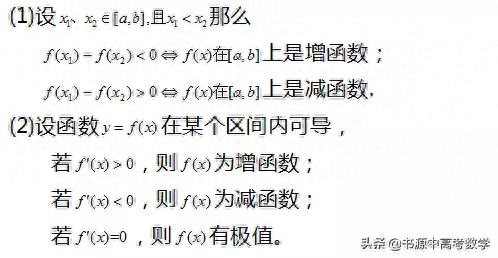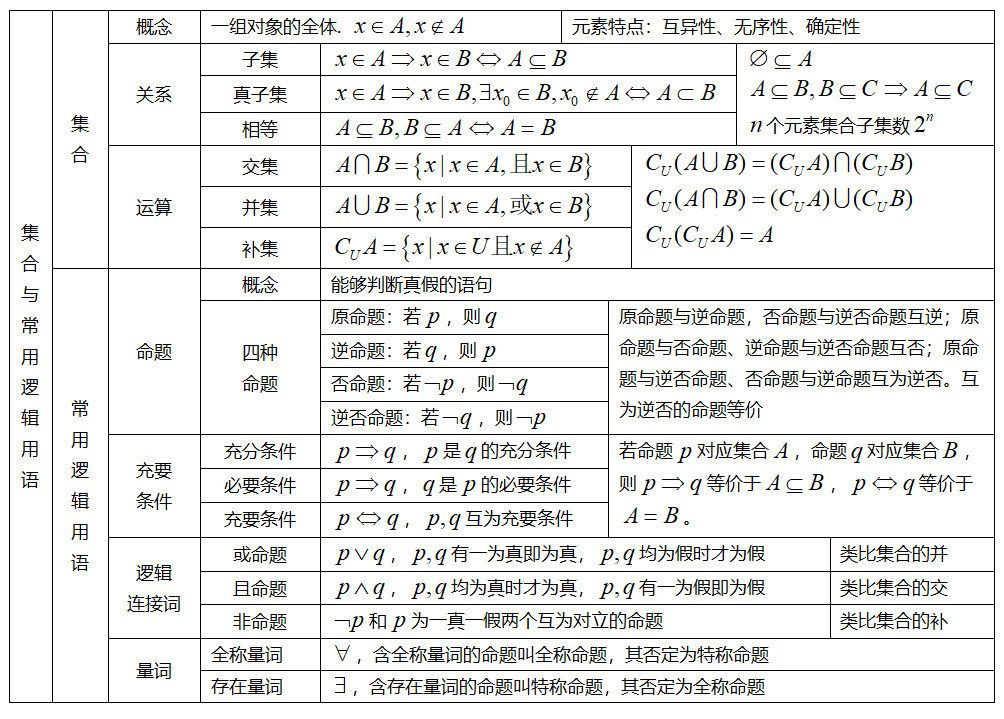Unit three Whatwould you like?

Lesson 3
一.教学内容 B.Let’s learn Look, write and say
二.课时目标
1. 能听、说、读、写单词“fresh”,“healthy”,“hot”和“sweet”“delicious”。
2. 能询问最喜欢的食物,如“What’s your favourite food?”。
3. 能用所学的形容词简单描述自己喜欢的食物。
三.教学重难点
重点:能听、说、读、写单词“fresh”,“healthy”,“hot”和“sweet”。 能询问最喜欢的食物,如“What’s your favourite food?”。
难点:能简单讲述自己喜欢某种食物的原因。
四.教学准备
录音机、录音带、词卡。
五.教学过程
Step.1.Warm-up
1. Free talk
T: Good morning,boys and girls.
Ss: Good morning,teacher.
T: How are youtoday?
Ss: Very well,thanks.
T: What would youlike for breakfast, S1?
Ss: I’d like …
T: What would youlike for breakfast, S2?
Ss: I’d like …
2. 请一两对学生上讲台表演“A. Let’s talk”部分的对话。
Step.2.Preview
1. 教师播放两遍歌曲“What would you like to eat today?”的录音。播放第一遍录音时,全班学生一起跟着小声唱歌曲;播放第二遍录音时,全班学生分男女生比赛唱歌。
2. 学生同桌合作,谈论彼此最喜欢的东西,如颜色、科目、日常活动等。
S1: What’s your favourite colour?
S2: My favouritecolour is blue / brown / white / … Whatabout you?
S1: My favouritecolour is yellow / black / orange / … What’s your favourite subject?
S2: My favourtiesubject is maths / English / … What about you?
S1: My favouritesubject is …
Step.3.Presentation
1. B. Let’s learn
(1) 教师利用多媒体课件分别呈现新鲜的、健康的、美味的、辣的和甜的食物,引出单词“fresh”,“healthy”,“delicious”,“hot”和“sweet”。
(2) 教师带领学生读几遍单词,然后全班学生分男女生读,最后学生在小组内读,小组成员相互纠正不准确的发音。
(3) 第一次播放教学录音,全班学生跟着录音读。第二次播放教学录音,全班学生分角色跟着录音读,提醒学生在跟读的过程中注意模仿录音中的语音、语调。
(4) 学生同桌合作练习表演对话,然后请一两对学生上讲台表演。
(5) 同桌合作,用例词替换对话中的关键词编写对话,然后教师请两三对学生上讲台表演。
2. B. Look, writeand say
(1) 学生根据图片完成句子。
(2) 教师请一位学生站起来示范读Zoom说的话。
(3) 学生根据图片说说自己喜欢什么食物以及原因,如“I like vegetable. They’re healthy. What about you?”
Step.4.Consolidation
1. 学生拿出画纸和画笔,自制健康食谱,并向同桌介绍。
2. 用is或are填空:
① The apples _________ sweet.
② The fish _________ fresh.
③ The grapes ___________ sour.
3. Check theanswer
① are, ② is, ③ are
Step.5.Summary
1. 师生一起总结本节课学习的词汇和句型,说说本节课的重难点,教师评价学生的表现。
2. 鼓励学生关注自己的饮食状况,养成良好的饮食习惯。
Step.6.Homework
1. 将本节课学习的新单词在四线三格内抄写六遍。
2. 听录音,跟读B. Let’s learn部分内容。
六.板书设计
Unit three Whatwould you like?
B. Let’s learn B.Look, write and say
fresh healthy delicious hot sweet
What’s your favourite food?
Ice cream. It’s sweet.
I love ice cream. It’s sweet. What about you?
七.教学反思
Unit three Whatwould you like?
Lesson 4
一.教学内容B. Let’s talk Let’s try
二.课时目标
1. 能听、说、认读单词“favourite”和“food”。
2. 继续谈论最喜欢的食物并给出原因。
3. 能完成“Let’s try”部分的听力任务。
4. 提高学生的英语交际能力,培养学生学好英语的自信心。
三.教学重难点
重点:能听、说、认读单词“favourite”和“food”。
难点:能在实际情景中运用本课时的重点句型进行交际。
四.教学准备
录音机、录音带、词卡。
五.教学过程
Step.1.Warm-up
1. Free talk
T: Good morning,everyone. Nice to meet you.
Ss: Good morning,teacher. Nice to see you, too.
T: How are youtoday?
Ss: Fine, thankyou.
T: S1, what’s your favourite food?
S1: My favourtiefood is …
T: S2, what’s your favourite food?
S2: My favouritefood is …
2. 教师随机出示上节课学习的五个单词的词卡,全班学生表演相应的动作。
Step.2.Preview
猜一猜
教师请两三位学生上讲台,写出自己最喜欢的食物,其他学生猜一猜,如:
T: Guess! What’s her / his favourite food?
Ss: Ice cream?
T: No, guess again.
Ss: Salad?
T: Yes, you’re right.
Step.3.Presentation
1. B. Let’s talk
(1) 教师在黑板上画出自己喜欢吃的几种食物,说:“Look! There is ice cream, hamburgers, breadand noodles on the blackboard. They are food. They are my favourite food.”,教师边说边在黑板上画几个笑脸,帮助学生理解“favourtite food”的意思。
(2) 介绍对话情景。
T: Sarah and Zhang Peng are talking abouttoday’s menu. Let’s go andsee what they would like to eat today.
(3) 教师出示本部分的教学挂图,问:“What food and drink are in today’s menu?”,学生根据情景图回答:“Thereare noodles, beef, fish, sandwich, tomato soup and milk in today’s menu.”。
(4) 第一次播放教学录音,全班学生跟着录音读,提醒学生在跟读的过程中注意模仿录音中的语音、语调。第二次播放教学录音,全班学生分男女生跟着录音读。第三次播放教学录音,学生听完录音后回答下面问题:
① What’s ZhangPeng’s favourite food?
② What’s Sarah’s favourite food?
③ What do they have today?
Answer:
① Noodles. He loves beef noodles.
② Fish.
③ They have beef noodles and tomatosandwiches today.
(5) 学生同桌合作练习表演对话,然后教师请几对学生上讲台表演。
(6) Ask yourfriend about your favourite food and drink
①学生四人一组,调查组内同学最喜欢的食物和饮料。
②教师请两三位小组代表上讲台汇报本组各位学生最喜欢的食物和饮料。
Step.4.Consolidation
1. B. Let’s try
(1) 明确听力任务
T: Zhang Peng and Sarah are thirsty. Whatwould they like to drink? I’ll play the tape for you to listen. After listening, match each personwith the right picture.
(2) 第一次播放教学录音,学生根据录音内容连线。
(3) 第二次播放教学录音,师生一起核对答案
2. 课堂练习——仿照例子写句子:
示例:I like bananas. They’re sweet.
① I like ____________. They’re ______________.
② I like ____________. They’re ______________.
③ I like ____________. They’re ______________.
④ I like ____________. It’s ______________.
⑤ I like ____________. It’s ______________.
Step.5.Summary
小结本课的重要句型并对学生的饮食习惯进行必要的引导。
T: When you likesomething, you can say …
Ss: I like … Because it’s / they’re …
T: When you wantto know someone’s favourite food, you may ask …
Ss: What’s his / her favourite food?
T: If you want toknow my favourite food, you may ask ...
Ss: What’s your favourite food?
T: I liketomatoes. They’re healthy.
T: Boys and girls.We must have much vegetables and fruit. They’re healthyfor us.
Step.6.Homeworken.12999.com
1. 听录音,跟读B. Let’s talk部分内容。
2. 把本节课学习的生词在四线三格内抄写六遍。
3. 调查自己家庭成员最喜欢的食物和饮料。
Name | father | mother | grandma | grandpa | Sister/brother |
Favourite food | |||||
Favourite drink |
六.板书设计
Unit three Whatwould you like?
B. Let’s try Let’s talk
What’s your favourite food?
I love beef noodles.
Well, let’s see.
We have beef noodles and fish sandwiches today.
七.教学反思
Unit three Whatwould you like?
Lesson 5
一.教学内容 A. Let’sspell B. Let’s wrap it up
二.课时目标
1. 通过大量的听读操练,掌握双元音/əʊ/和/au/在单词中的发音,能读准“Let’s spell”部分的例词,并完成本部分的听力任务。
2. 简单了解单数可数名词变成复数的规则。
3. 纠正学生错误的发音,引导学生自主总结发音规律。
4. 逐步培养学生学习英语语音知识的兴趣,提高学生的听力能力。
5. 创设良好的英语学习氛围,激发学生学习英语的热情。
三.教学重难点
重点:
1. 通过大量的听读操练,掌握双元音/əʊ/和/au/在单词中的发音,能读准“Let’s spell”部分的例词,并完成本部分的听力任务。
2. 简单了解单数可数名词变成复数的规则。
难点:
1. 引导学生自主总结发音规律,激发学习英语语音知识的兴趣。
2. 双元音/əʊ/和/au/的发音对比。
四.教学准备
录音机、录音带、词卡。
五.教学过程
Step.1.Warm-up
1. Free talk
T: Good morning,everyone.
Ss: Good morning,teacher.
T: How are youtoday?
Ss: Fine, thankyou. And you?
T: I’m fine, too.
2. 先让学生在四人小组内介绍自己家人最喜欢的食物,如“My father’sfavourite food is fish and his favourite drink is tea. What’s my mother’sfavourite food and drink? Noodles and orange.”,然后教师请三位小组代表向全班同学介绍。
Step.2.Preview
玩游戏:剪刀、石头、布(Rock, Scissors and Cloth)
规则:学生小组合作,玩“剪刀、石头、布”游戏,要求输的一方说出一种食物的英文名称,说不出的人被淘汰,最后剩下的一位同学是获胜者。
Step.3.Presentation
A. Let’s spell
1. Read, listenand chant
(1) 教师在黑板上用简笔画画出一只奶牛,说:“Look, this is a cow.”,然后在奶牛旁边画出一些花,说:“There are some flowers. Wow! They’re so beautiful.”,最后在旁边画一个坐着的小男孩,说:“The boy loves to see the cow and the flowers. He sitsdown and enjoys them.”
(2) 教师画一间房子,墙面上有一扇开着的窗户,房子外面有一棵树,树上没有树叶,树下面堆积着黄色的树叶,树干上趴着一只蜗牛,天上飘着雪花,然后教师说:“Look at the blackboard. Some leaves are onthe ground. The snow is falling down. It’s cold.Close the window, please. Oh, the snail is slow. When can it go home?”。
(3) 教师把本部分的两组例词写在黑板上。
cow flower wow down
slow snow yellow window
(4) 教师带领全班学生读几遍,引导学生发现,第一组单词中的字母组合ow都发/au/,第二组单词中的字母组合ow都发/əʊ/。
(5) 播放本部分的教学录音,全班跟着录音读,提醒学生在跟读时要注意模仿录音中的发音,尽量做到读准元音字母的发音。
2. Listen, numberand say
(1) 学生自己读一读本部分的四组单词。
(2) 播放本部分的教学录音,学生根据录音内容圈出答案。
(3) 再次播放教学录音,师生一起核对答案。
(4) 第三次播放录音,全班学生跟着录音读。
3. Listen, writeand say
(1) 教师先让学生观察图片,然后播放教学录音,全班学生根据录音内容填空。
(2) 再次播放教学录音,师生一起核对答案。
(3) 让学生选择自己喜欢的一句话,并把其在四线三格中抄写两遍。
Step.4.Consolidation
1. B. Let’s wrap it up
(1) 教师用多媒体课件出示一只香蕉的图片,说:“This is one banana.”,再出示两只香蕉的图片,说:“They’re twobananas.”。
(2) 教师用多媒体课件出示一个三文治的图片,说:“This is one sandwich.”,再出示两个三文治的图片,说:“They’re two sandwiches.”。
(3) 教师将上面四个句子写在黑板上。
This is onebanana. They’re two bananas.
This is one sandwich. They’re two sandwiches.
(4) 教师讲解:把可数名词单数变成复数是,一般来说是直接在单词后记加“-s”,如果单词以-s, -sh, -ch, -x结尾,则在单词后面加“-es”。(可数名词单数变复数的规则不止这两项,此处如果把所有规则都呈现出来的话,学生不容易记住,学习兴趣也会大打折扣)
(5) 学生填写表格,师生一起核对答案。
2. 课堂练习——把下列句子重新排序,组成意思完整的对话:
( ) We havetofu, fish and rice.
( ) Yourschool meals are yummy.
( ) Look atour school menu.
( ) What doyou have for lunch on Mondays?
( ) Thankyou.
3. Check the answer: 3 4 2 1 5
Step.5.Summary
1. 师生一起总结本节课学习的词汇和句型。
2. 鼓励学生在日常英语学习中注意单词的发音,要发准音、多模仿。
Step.6.Homework
1. 听录音,跟读Let’s spell部分内容。
2. 预习下节课的内容。
六.板书设计
Unit three What would you like?
This is one banana. They’retwo bananas.
This is one sandwich. They’retwo sandwiches.
七.教学反思
Unit three What would you like?
Lesson 6
一.教学内容Read and write Story time
二.课时目标
1. 能读懂“Read and write”的阅读任务,复习有关食物的句型。
2. 能听懂“Let’s check”部分的录音并完成句子填空练习。
3. 能读懂“”部分的故事。
4. 了解英文信件的书写格式。
5. 能听、说、认读单词“dear”。
6. 学会一些复习策略,培养学生对复习课的兴趣。
三.教学重难点
重点:
1. 能读懂“Read and write”部分的日记,简单了解日记的格式,并完成相应练习。
2. 能读懂“Let’s check”部分的录音,圈出正确答案并回答问题。
3. 能读懂“Story time”部分的故事。
难点:
1. 了解英文信件的书写格式。
2. “Story time”部分趣味故事的理解。
四.教学准备
1. 教师准备多媒体课件、录音机和录音带。
2. 教师准备图片、词卡。
五.教学过程
Step.1.Warm-up
1. Free talk
T: Good morning, boys and girls.
Ss: Good morning, teacher.
T: Nice to see you.
Ss: Nice to see you, too.
T: What do you have for breakfast today?
Ss: I have … for breakfast today.
T: What’s time now?
Ss: It’s …
T: Oh, it’s time for our class. Let’s begin now.
2. 教师出示本单元所学的单词的卡片,全班学生说出相应的汉语意Step.2.Preview
教师把全班分成两大组,每组派一位学生代表上讲台。教师在黑板上贴上各种食物图片。教师随机说一个食物单词,学生立刻用手拍相应的食物图片,看谁最先拍到图片。几轮游戏后,拍到图片次数较多的为获胜者。
Step.3.Presentation
1. B. Read and write
(1) 简单介绍阅读材料。
T: Do you remember Robin?
Ss: Yes.
T: Robin is a robot. It’sa helpful robot. It can do many things. It can cook. Today Robin will cook. WuYifan and his grandpa each write a letter about what they want to eat. Let’sread the two letters and see.
(2) 让学生观察信件的格式,教师稍作讲解:英文书信一般由六部分组成,即:信头、信内地址、称呼、正文、结束语和署名。正文开头部分一般顶格写上“Dear …”,意为“亲爱的……”,结尾应署上姓名。
(3) 教师播放教学录音,学生根据录音内容选择正确的图片。
(4) 学生自主阅读信件,回答下面的问题。
① What’s Wu Yifan’s favourite food?
② Does Wu Yifan like beef?
③ What’s Grandpa’sfavourite food?
Answer:
① Ice cream.
② No, he doesn’t.
③Chicken.
(5) Write to Robin and tellwhat you would like to eat.
学生仿照文中的信件,写一封信给罗宾,说一说自己想吃什么食物,然后学生在四人小组内读一读自己写的信件,最后教师请两三位小组代表站起来读一读。
2. Let’s check
(1) 介绍听力任务。
T: Here is alistening material about Amy’s favourite food. Please listen to the tape andfill in the blank.
(2) 先让学生观察图片中的食物,然后播放教学录音,学生根据录音内容完成句子填空。
(3)教师再次播放教学录音,师生一起核对答案。
Step.4.Consolidation
1. C. Story time
(1) 教师用多媒体课件出示本部分的教学挂图,学生猜测故事大致内容。
(2) 介绍故事背景。
T: Zoom andZip are at the farm now. Zoom is hungry. They’ll cook by themselves. Let’slisten to the tape and see what happens.
(3) 第一次播放教学录音,全班学生跟着录音读,提醒学生在跟读的过程中注意模仿录音中的语音、语调。
(4) 第二次播放教学录音,学生听完录音后回答下面的问题:
① What would Zoom like to eat?
② What are so fresh?
③Is the salad healthy?
④ Whatdoes Zoom think about the dinner at the farm?
Answer:
① He’d like a salad.
② The vegetables.
③Yes, it is.
④ Dinnerat the farm is great.
(5) 学生在小组内练习分角色表演故事,然后教师请两三组学生上讲台表演,提醒学生表演时要带上适当的表情和动作,教师评选出“最佳表演组”,并给予表扬。
2. 课堂练习——选择填空:
( ) ① Bananas_________ my favourite.
A.is B. are C. like
( ) ② I’m hungry. ________ goto a restaurant.
A.Let B. Let’s C. Lets
( ) ③ Cabbage and cucumber are _________.
A.meat B. vegetables C. fruit
( ) ④ Opoos! These noodles are __________ salty.
A.to B. two C. too
( ) ⑤ It’s 6:30 p.m. Let’s have ___________.
A.breakfast B. lunch C. dinner
3. Check the answer
① B, ② B, ③ B, ④ C, ⑤ A
Step.5.Summary
师生一起总结本单元学习的词汇和句型。
Step.6.Homework
1. 听录音,跟读本单元的内容一次。
2. 预习下一单元的内容。
六.板书设计
Unit three What would you like?
B. Read and write B. Let’s check C. Story time
-What would youlike to eat / drink?-I’d like …, please.
-What’s yourfavourite food?-It’s sweet / hot / delicious / …
七.教学反思
Unit four Whatcan you do?
Lesson 1
一.教学内容 A. Let’s try Let’stalk
二.教学目标
1. 能够理解对话大意,能够运用核心句型完成问答活动。
2. 能够在情景中运用句型Whatcan you do for the party?I can... ...询问并回答某人能做什么事情。
3. 能够按照正确的语音、语调朗读对话并进行角色扮演。
三.教学重难点
重点:够在情景中运用句型Whatcan you do for the party?I can... ...询问并回答某人能做什么事情。
难点:能够按照正确的语音、语调朗读对话并进行角色扮演。
四.教学准备
录音机、录音带、词卡。
五.教学步骤
Step.1.Warm-up
1. Lead-in (Main scence)
T:The children will have an English party nextTuesday.
然后借助日历或学校校历介绍:We’ll... ...next... ...帮助学生理解句意。
T:Chen Jie canplay the pipa.Zip can dance.Zoom can sing.
Step.2.Let try
T:What can Mike do?
听录音,选出正确答案。
Step.3.Let talk
1.引入话题:
如果我们学校也办一场晚会,同学们会做什么呢?
T:What can you dofor the party,chlidren?(板书,带读,问答。)
引导学生回答I can... ...
T:Wonderful!Youare helpful.
2. 听录音,理解对话。
同学们会做很多,那么我们看看我们的朋友Zhang P eng、 John 、Wu yifan会做什们呢?
教师设计问题,学生带着问题听录音。
What can Zhang P eng do?
What can John do?
3. 听录音,模仿朗读。
4. 学生三人一组,分角色练习表演对话,教师鼓励学生配上相应的动作。
5. 请几组学生进行展示,鼓励其他学生和教师一起进行评价。
Step.4.Consolidation
教师引导学生复习各种文娱活动的英文名称,然后请学生将sing,dance,draw pictures,clean the room,dosome kung fu等词带入本节课核心句型中练习对话。
S1:What canyou do,...?
S2:I can.. ...
Step.5.Summary
师生一起总结本节课学习的知识,学生说一说还有什么不懂的地方以及自己学习中遇到的困难。
Step.6.Homework
1.听录音,跟读本部分内容。
2.将本节课学习的新单词在四线三格内抄写5遍。
六.板书设计
Unit 4 What can you do?
A. Let’s try Let’s talk
What can you do for the party?
I can sing English song.
I can do some kung fu.
七.教学反思
Unit four Whatcan you do?
Lesson 2
一.教学内容 A. Let’s learn do asurvey
二.教学目标
1. 能够听、说、读、写词汇dance,sing English song,do kungfu,play the pipa,draw cartoons.
2. 能够在情景中运用句型Whatcan you do?I can... ...询问并回答某人能做什么事情。
3. 能够完成关于课余文化活动的调查并填写点查表。
三.教学重难点
重点: 能够听、说、读、写词汇dance,sing English song,do kungff,play the pipa,draw cartoons.
难点:能够在语境中正确运用短语及句型交流。
四.教学准备
录音机、录音带、词卡。
五.教学步骤
Step.1.Review(复习)
从Let’s talk 的对话导入词汇教学。教师边出示此卡边问学生:
T:Hi,children .We will have an English partynext Tuesday.What can you do for the party,.....?
S1:I can... ...
T:Great!You arehelpful.What can you do,...?
S2:I can... ...
T:Wonderful!Youare helpful.What can you do,...?
S3:I can... ...
在交流的过程中,教师板书重点句型,并将单词卡粘贴在黑板上。
在教学play the pipa后,教师可进一步介绍一些西方的乐器,如:erhu,guzheng,piano,violin等。
Step.2.Let’s learn
1.学生听录音,跟读短语及句子。
2.学生两人一组将短语带入核心句型问答,鼓励学生配上相应的动作。
SI:What can you do?
S2:I can... ..
3.请几组学生进行展示,鼓励其他学生和教师一起进行评价。
Step.4.Consolidation
活动一:请五名学生手持本节课单词卡片站在讲台前,教师说一个单词或词组,手持相应卡片的学生要快速举起卡片,其他学生大声朗读上面的单词。
活动二:请学生上台来做动作,其他学生猜活动名称。
Step.5.Do a survey
1.教师呈现ZhangPeng和John之间的对话,问:Whatcan Zhang Peng do?学生找出答案,教师在相应的方格中打钩。
2.教师和一名学生做示范,如:
T;What can youdo,...?
S:I can singEnglish song and dance.
3.学生四人一组展开调查并完成调查表格。然后,教师应到学生进行汇报。
Step.6.Homework
3.听录音,跟读本部分内容。
4.将本节课学习的新单词在四线三格内抄写5遍。
六.板书设计
Unit four Whatcan you do?
A. Let’s learn do a survey
What can you do ?
I can draw cartoons.
七.教学反思
Unit four What can you do?
Lesson 3
一.教学内容 B. Let’s try let’s talk
二.教学目标
1. 能够理解对话大意;能够按照正确的语音、语调进行朗读对话。
2. 能够在情景中运用句型Canyou... ?Yes,I can./No,I can’t询问对方能够做什么并回答。
3. 能够运用核心句型进行连锁回答活动。
4.能够在情景中恰当运用功能句Todaywe’ll learn some kung fu.
三.教学重难点
重点: 会用句型Can youdo any kung fu?Yes,I can./No,I can’t对话。
难点:能够在语境中正确运用短语及句型交流。
四.教学准备
录音机、录音带、词卡。
五.教学步骤
Step.1.Let’stry
1.从Let’s try 的导入对话教学。教师呈现如下表格,提问:Can Zhang Peng/Mike do any kung fu?引导学生一起表述:Zhang Peng can do some kung fu.Mike can’t do any kungfu.请学生在黑板上的表格中打钩打叉。
Zhang Peng | Mike | John | Oliver | |
do some kung fu | √ | × |
Step.2.Let’s talk
1.教师指着表格中John和Oliver的名字问:CanJohndo any kung fu?How about Oliver?
2.播放录音,学生听录音,填写表格。
3.学生观察图片,回答问题。
Who is Mr Ma?
What does he teach?
学生回答正确后,教师板书马老师说的话:Today we’ll learn some kung fu.(板书,带读,理解句意。)
4.板书核心句型Can you do any kung fu?Yes,I can.(教学,提示学生注意在疑问句和否定句中用do any kung fu,在陈述句中用do some kung fu)
5.学生听录音,跟读短语及句子。
6.学生两人一组将短语带入核心句型问答。
SI:Can you do any kung fu?
S2:Yes,I can.
SI:Great!/Cool!Wonderful!
7.请几组学生进行展示,鼓励其他学生和教师一起进行评价。
Step.3.Can you doit?
1.教师带学生认读、朗读Canyou do it?部分的词汇,并鼓励学生补充其他词汇。如:dance,draw pictures,draw cartoons,play thepipa,play the piano,play ping-pong,play football,make a cake,make a kite等。
2.教师和几名学生示范连锁回答,提醒学生一个问题只能问一次。对话示例如下: en.12999.com
T:Can you sing English songs?
S1:Yes,I can.Can you do any kung fu?
S2:No,I can’t.Can you make a cake?
S3:No,I can’t.
3.学生分组练习连锁回答。
Step.4.Summary
总结本节课学习的知识,学生说一说还有什么不懂的地方以及自己学习中遇到的困难。
Step.5.Homework
5.听录音,跟读本部分内容。
6.课后四人一组练习Let’stalk部分的对话,下一节课表演。
六.板书设计
Unit four Whatcan you do?
B. Let’s try Let’s talk
Today we’ll learn some kungfu.
Can you do any kungfu?--Yes,I can.
七.教学反思en.12999.com
Unit four What can you do?
Lesson 5
一.教学内容 B. Let’s learn Writeand say
二.教学目标
1.能听、说、读、写五个有关课余文化活动的单词或词组:swim,speak English,cook,play basketball,play ping-pong.
2. 能够在语境中正确运用这五个单词或词组询问某人是否具备某种技能并作答。
三.教学重难点
重点: 会用句型Can you...?Yes,I can./No,I can’t对话。
难点:能够在语境中正确运用短语及句型交流。
四.教学准备
录音机、录音带、词卡。
五.教学步骤
Step.1.Let’slearn
1.教师呈现本单元主情景图中Zoom和Zip的图片,引导学生表达Zip can dance.Zoom can sing.教师接着说:Yes,Zoom can sing.What else can he do?接着教师播放Let’s learn部分的对话,然后说:zoomcan swim.He can do some kung fu,too.
2.教师板书Zoom和Zip的对话,学生朗读教师边做有用的动作边问学生:Can you swim?引导学生回答Yes,Ican./No,I can’t。
3.教师利用单词卡,引入词汇教学。
4.在呈现单词卡playbasketball,play ping-pong时,请学生看卡片造句,如:Oliver can play basketball. Amy can playping-pong.
5.呈现speakEnglish图片,问;What can Wu Yifan do?引导学生回答:He can speak English.教师接着再问:Canyou speak English?Can you speak Chinese?引导学生回答,并根据自己实际情况表述:I can speak English.I can speak Chinese,too.
6.听录音,模仿跟读。
7.师生问答。
T:Can you ...?
S:Yes,I can./No,I can’t
8.学生两人一组替换关键词练习对话,巩固单词和核心句型。
Step.2.consolidation
活动一:教师说一项活动名称,学生作相应的动作。
活动二:教师编一个简单的Let’schant,学生边做动作边朗读。
Swim,swim,swim,Ican swim.
Speak ,speak,speak,I can speak English.
Cook,cook,cook,I can cook.
Play,play,play,I can play basketball.
I can play ping-pong,too.
活动三:Write and say
1.教师领读Sarah 的话,熟悉句子结构,然后学生根据自己的实际情况填写表格,并向同桌描述。
2.请几名学生展示自己编写的英语句子。
Step.4.Homework
抄写Let’slearn部分的短语。
六.板书设计
Unit four Whatcan you do?
B Let’s learn write and say
Zip:Can you swim?
Zoom:Yes,I can.I can do some kung fu,too
七.教学反思
Unit four What can you do?
Lesson 6
一.教学内容 B Read and write
二.教学目标
1.能够在图片的帮助下读懂电子邮件并完成判断正误的活动。
2.能够写出三个描述自己能做或者不能做什么的句子。
三.教学重难点
重点:理解短文句意。
难点:怎样用我们学过的句子写英文邮件。
四.教学准备
录音机、录音带、词卡。
五.教学步骤
Step.1.Lead-in
1.围绕“朋友”的话题展开讨论。教师出示一张自己朋友的照片,介绍:This is my best friend.She is friendly,clever andkind.She can speak English.She can cook.She can play basketball,too.
2.教师问学生:Whois your best friend?引导学生回答。
Step.2.Read andwrite
1.出示机器人的图片,介绍:Thisis Robin.Do you know him?引导学生根据第一单元学过的内容回忆Robin,并做简单描述。
2.学生听录音,读短文,谈一谈Robin的性格以及会做的事情。
3.教师带学生认读短文,理解句意。
4.判断句子正误。
5.教师播放录音,学生跟读模仿。
6.分组朗读邮件。
Step.3.Consolidation
1.教师问:Do youwant to be Robin’s friend?引导学生回答后,请学生口头描述自己的性格及能力。
2.指导学生完成个性化书写活动。
Step.4.Homework
1.听录音,模仿跟读Read and write这一部分的短文。
2.模仿Read andwrite用五个英语句子写一篇介绍自己性格和能力的小作文。
六.板书设计
Unit four Whatcan you do?
B Read and write
I am...
I can...
I can’t...
七.教学反思
Unit five Thereis a big bed
Lesson 1
一.教学内容:A. Let’slearn A. Let’s play
二.课时目标
1. 能听、说、读、写单词“clock”,“plant”,“bike”,“waterbottle”和“photo”,并能用句型“Thereis …”表达某处有某物。
2. 能做“Let’s play”部分的游戏。
3. 培养学生积极与他人合作的优良品质。
4. 教育学生要热爱自己的家。
三.教学重点难点
重点:
1. 能听、说、读、写单词“clock”,“plant”,“bike”,“waterbottle”和“photo”,并能用句型“Thereis …”表达某处有某物。
2. 能做“Let’s play”部分的游戏。
难点:
教学There be句型的简单运用。
四.教学准备
1. 教师准备多媒体课件、录音机和录音带、图片、衣服实物。
2. 学生准备画笔和画纸。
五.教学过程
Step.1.Warm-up
1. Free talk
T: Good morning, everyone. How are youtoday?
Ss: Fine, thank you. And you?
T: I’m fine,too.
2. 教师播放歌曲“What can you do?”的录音,全班学生跟着录音大声唱歌曲,创设学习英语的氛围。
Step.2.Preview
1. T: You can do so many things. You’re helpful. Look! The room is clean and beautiful. (课件出示一间干净、整齐的房间)
T: What can you see in this picture?
S: I can see a bed, a desk and a …
2. 教师依次指着图片中的bed,window, desk, picture, chair问:“What’s this?”,学生回答:“It’s a / an …”并快速拼读。
T: This is a nice room. I want to make thisroom nicer. So I need to put more things in this room.
Step.4.Presentation
1. A. Let’s learn
(1) 教学新单词
T: First, let’s put aclock in the room. (教师边说边点击课件,房间的墙上出现一个钟表) Now there is a clock in the room. Followme, pleas. Clock, c-l-o-c-k, clock, there is a clock.
教师用同样的方法引出词语:plant,water bottle, bike, photo
(2) 教师带领学生读几遍新词汇,学生齐读。
(3) 教师介绍张鹏的房间。
T: Do you know what Zhang Peng’s room like? Let’s go andsee.
(4) 第一次播放录音,全班学生跟着录音读,了解对话的大致内容。
(5) 学生同桌合作,用句型“Thereis ...”介绍自己班级的物体。
2. A. Let’s play
(1) 教师请三位学生上讲台,表演本部分的“句子接龙”游戏。
(2) 学生三人一组,模仿示例表演“句子接龙”游戏,然后教师请两三组学生上讲台表演。
Step.4.Consolidation
1. 画一画
教师说:“Thereis a clock, a chair, a bed … in my room.”,学生根据教师的描述画图。
2. 课堂练习——填入所缺字母,完成单词:
①瓶子 bot __ __ e ②时钟 clo __ __ ③自行车 b __ __ e
④水 w __ t __ r ⑤照片 pho ____ ⑥植物 pl__ __ t
3. Check the answer
Step.5.Summary
师生一起总结本节课学习的词汇和句型,学生说说自己还有哪些不懂的地方。
Step.6.Homework
1. 抄写本节课学习的新单词,每词8遍。
2. 跟着录音朗读本节课所学习的内容。
六.板书设计
Unit five There is a big bed
A. Let’s learn A. Let’s play
clock plant bottle water bottle bike photo
This is my room. There is a clock, a …
七.教学反思
















